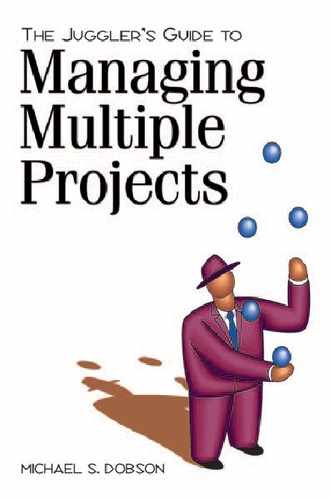CHAPTER 3
Juggling the Independent Project Portfolio
“Everything I do is a project,” Patrick says. “At any given moment, I’m managing between five and ten simultaneous projects. I complete over fifty projects each year—all with a tiny staff, under tough conditions, and with a lot of uncontrollable events, such as getting manuscripts from people who have the knowledge but not the writing skill.”
Patrick’s office and the small work area for his publishing team are normally buried in a sea of paper. Manuscripts, galley proofs, paste-ups, and printing contracts show the large number of projects going on. A metal scheduling board highlights key deadlines and issues, but Patrick says it’s more honored in the breach than in the observance.
Everyone on the team works hard—very hard. In spite of everything, deadlines slip. Patrick wants to get control, to get the work out without punishing his staff every working day.
“I’m ready to try anything,” he says.
DEFINITIONS
You will need to understand these key terms before proceeding.
An independent project is a project that is part of a portfolio of projects, usually similar in subject matter, for which success and failure is independent of other projects in the portfolio.
Cross-project resources are the people and tools that accomplish the projects in an independent project portfolio. While the projects do not directly relate to each other, they draw on the same resources. If a resource is late on one project, it can affect the next project for which the resource is scheduled.
Projects in an independent project portfolio typically involve similar subject matter. Patrick’s projects are all in the publishing area: books, magazines, and reference guides. Some projects may be outside the primary subject area. For example, Patrick might have a project to upgrade desktop publishing hardware and software or develop more freelance editorial support to handle production logjams. Although the subjects of these projects differ, they are all related to the core business of publishing.
Patrick’s situation is not wholly different from Carolyn’s. Like Carolyn, Patrick has regular management duties, meetings to attend, special assignments from the boss, and other activities that take up part of his day. Similarly, his staff has regular duties.
When thinking about managing an independent project portfolio, remember that the techniques described in the next few chapters are in addition to, not instead of, the techniques for managing the task-oriented portfolio.
Independent portfolio projects may be of any length; typically, they are more substantial in size, length, scope, and complexity than those in a task-oriented portfolio. Each project will take weeks of work with a dedicated team to complete even if nothing else is being done in that department.
SINGLE PROJECT MANAGEMENT VERSUS MULTIPLE PROJECT MANAGEMENT
Because of the difference in project size, if you manage an independent project portfolio, you can benefit from the techniques of professional project management.
A definition you learned in Chapter 2 allows you to use single project management techniques on multiple projects:
Project = Task
The words project and task are synonyms—the practical difference is perspective. As a result, you can use single project management techniques on multiple projects as long as you treat each project in your portfolio as a task on the charts.
You will learn exactly how to do this step by step. First you need to learn single project management techniques.
